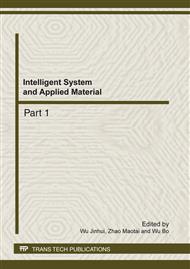p.1109
p.1115
p.1120
p.1125
p.1129
p.1135
p.1140
p.1145
p.1150
PWM Speed Regulating System of DC Torque Motor Based on Fuzzy Immune-PID Control
Abstract:
A PWM drive card is designed aiming at a certain type of DC torque motor used in the speed turntable. A fuzzy immune-PID control method is used instead of the traditional PID method, in order to modulate the PWM waves, and then realize the control for servo¬¬¬ system of torque motor. The simulation results show that, compared with the traditional PID method, the responding time is greatly reduced by using the fuzzy immune-PID control method. And the system gets good anti-interference ability, of which dynamic and steady performances are also improved.
Info:
Periodical:
Pages:
1129-1134
Citation:
Online since:
February 2012
Authors:
Keywords:
Price:
Сopyright:
© 2012 Trans Tech Publications Ltd. All Rights Reserved
Share:
Citation:


